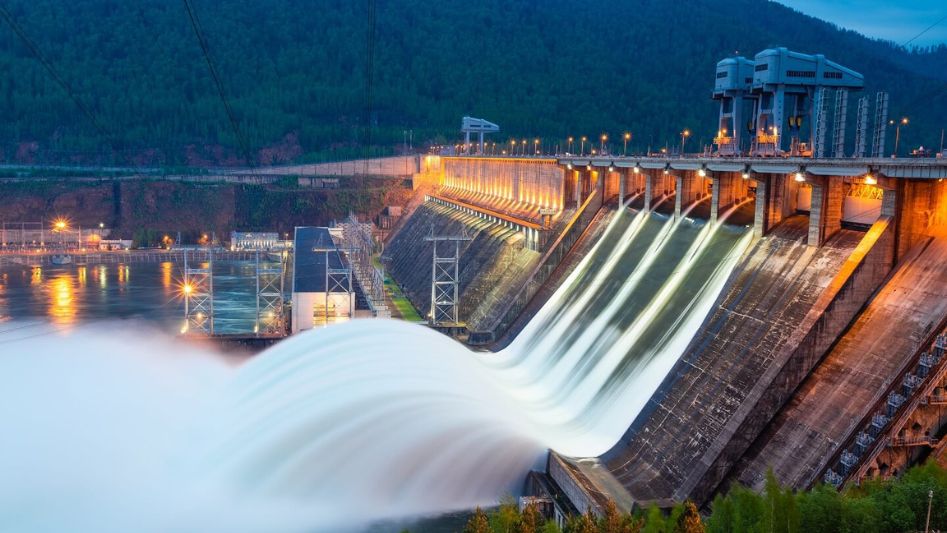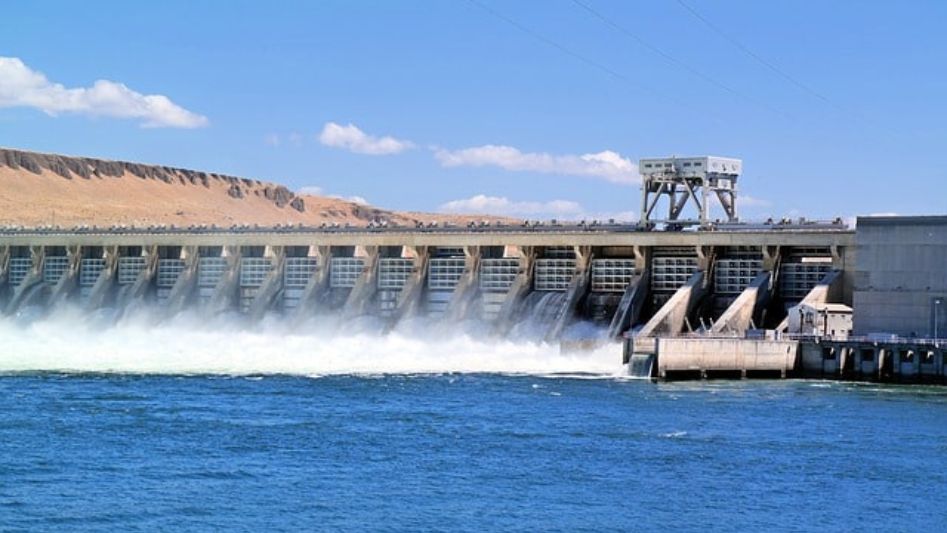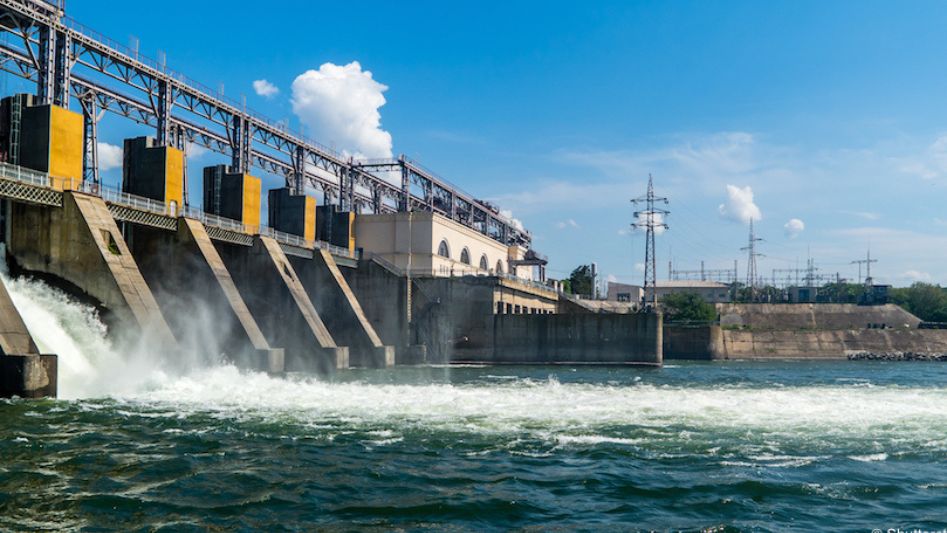Hydropower is electricity generated from the movement of water. It’s a renewable resource that doesn’t emit carbon, making it a cleaner alternative to fossil fuels.
Table Of Content
- What is hydropower?
- How does hydropower work?
- There are four main types of hydropower facilities:
- Is hydropower renewable?
- How is hydropower used?
- What are the advantages of hydropower?
- What are the disadvantages of hydropower?
- What effects does hydropower have on the environment?
- What percent of the world’s electricity is supplied by hydropower?
- How to find a job in hydropower
- Conclusion
- FAQs
- You May Also Like
- External Links
More than 60 countries globally use hydropower, with several of them fulfilling half their electricity demand with this inexpensive resource. In addition to being environmentally friendly, supplying electricity “on demand,” and opening up tens of thousands of new careers around the world, this energy option is a huge economic boon.

What is hydropower?
Hydropower is the generation of electricity from moving water, such as the ocean, waterfalls, or rivers. Water is continually in motion around the world, and this motion can be used to generate power or move machines. Water is a renewable energy source due to its unlimited availability and the infinite regenerative potential of its cycle.
Hydroelectric plants of various types harness the energy of moving water to generate electricity. The kinetic energy of the water is converted into electricity by turbines and generators, which is subsequently distributed to homes, companies, and factories.
Microhydro is a novel technology that is being used to power homes and businesses in rural locations. By using this technology, even tiny farms can produce their own electricity without relying on massive hydroelectric facilities. Microhydro uses lower water flows to power smaller generators, which in turn power appliances and electronics in homes and businesses.
How does hydropower work?
Hydroelectricity is produced by channelling the kinetic energy of moving water through a turbine attached to a generator. The water for hydroelectric plants is often held behind a dam, with the release of that water managed by a gate or valve. The higher the dam, the more power can be harnessed.
After gaining potential energy just above the dam, the water releases that energy as kinetic energy as it rushes downward. The water flows through a turbine, which spins an electric generator. The generated electricity is then distributed to end users.
There are four main types of hydropower facilities:
The most prevalent form of hydroelectric plant is the impoundment variety, which uses a reservoir. When the reservoir is full, water is discharged and goes through a turbine to generate electricity. Power is generated when the turbine spins and turns on a generator. If the facility is a microhydro facility, the size of the reservoir is not important.
Second, there is pumped storage, which functions similarly to impoundment but uses two reservoirs to harness the flow of water. The reservoirs are spread out across the landscape and supply “on demand” power.
Third, run-of-the-river facilities are ideal for generating electricity on a smaller scale. Just as water behind a dam may turn a turbine, river currents can do the same thing. The power generated by the turbine is fed into the grid via a generator. This strategy is most effective in a river with a consistent flow of water.
Tidal power is a technique that harnesses the energy contained in the motion of the sea’s tides. Tidal facilities can generate large amounts of energy twice a day due to the regularity of the tides.
Is hydropower renewable?
Since it harnesses the water cycle that already exists on our planet, hydropower is a sustainable energy source. Since no harmful byproducts are released into the air, this method of producing electricity is environmentally friendly.
However, there are always unintended consequences when human activity alters the delicate equilibrium of ecosystems. For instance, some people find it problematic that hydropower plants store such enormous quantities of water because of the worldwide water crisis.
In addition to preventing fish from reaching their spawning areas, hydropower can potentially kill them. As a result, river fish populations often fall, and in some cases, entire fish species go extinct.
Another theory holds that carbon dioxide and methane are released by plants that rot in reservoirs, contributing to global warming.

How is hydropower used?
Electricity for households and businesses is generated using hydropower. Machines can be powered by it as well. Hydroelectricity was once used to power mills that ground grain.
It is now possible to generate electricity for rural homes and businesses using hydropower systems, given the correct topography and financial resources. Using government rates and agreements, homeowners and companies can resell excess energy to the grid.
Hydroelectric dams not only provide electricity but also serve as recreational reservoirs where people may go boating, swimming, and fishing. It’s also possible to use them for flood prevention, irrigation, and water supply.
What are the advantages of hydropower?
Homeowners, companies, and the planet all stand to gain from hydropower’s many positive effects. To begin with, it is a reliable and constant supply of power. Hydropower is a sustainable and environmentally friendly energy option because the water on Earth will never be depleted.
For this reason, hydropower is more responsive than many other renewable energy sources and is thus ideal for addressing peak energy demand. The ability of hydropower facilities to control the flow of water means that output can be increased during peak demand periods and decreased during periods when demand is lower.
The electricity produced by hydropower plants is also more stable than that produced by other methods. A generator, for instance, can last for a century with minimal upkeep.
Towns in the area may also benefit from the development of hydropower sites. Because dams can only be constructed in rural areas, specialised employees are needed to construct roads, manage transportation, and construct and maintain equipment. As a result, new avenues can be paved and new facilities made available to residents of rural areas.
When combined with other renewable energy sources, hydropower becomes even more effective. Hydro can be used to supplement solar and wind power, which have variable outputs but are nonetheless constant and reliable due to hydro’s inherent stability.
What are the disadvantages of hydropower?
Of course, there are also drawbacks to hydropower, despite its many advantages. The most glaring limitation is that hydropower facilities can typically only be constructed in rural areas or in close proximity to a source of water.
Equally high are the costs associated with building a hydroelectric facility. Particularly for large-scale projects, substantial investment is needed, and there may be extra requirements associated with their development that increase the total capital.
Run-of-the-river systems rely on a steady supply of water, whereas impoundment and tidal power are extremely reliable but require a dam or other water storage facility. Because of its reliance on precipitation to provide sufficient flow to turn a turbine, river-run hydro is susceptible to weather fluctuations. This means that hydropower generated by rivers may be vulnerable to dry spells. The prevalence of this issue may increase in the not-too-distant future as global temperatures continue to rise due to climate change.
Contrarily, impounding hydro might increase the likelihood of flooding. Dams are dangerous to communities in their vicinity because they are typically constructed at high heights. Dams are designed to withstand massive amounts of water, but if they fail, the resulting flood may wreak havoc on the surrounding area. In 1975, 170,000 people were killed when the Banqiao Dam in China burst as a result of excess rainfall from a typhoon. This was the worst dam disaster in history.
What effects does hydropower have on the environment?
A hydropower project’s environmental effects are proportional to the magnitude of the project. An impoundment project’s effects will be greater than those of a smaller run-of-the-river project.
Other factors, such as the technology employed and the extent to which supplementary infrastructure is needed in the vicinity, can affect hydropower projects.
Naturally, any hydroelectric project necessitates meticulous planning and strict adherence to best practises and regulatory standards. While there is inevitable environmental disruption during the construction of hydroelectric sites, the process is closely regulated to minimise damage.
What percent of the world’s electricity is supplied by hydropower?
Hydropower generates 17% of the world’s electricity, per the International Energy Agency. It has the highest penetration rate of any renewable energy source.
According to the EIA, China generates more hydropower than any other country. Canada, Brazil, and the US follow in second, third, and fourth place, respectively.
How to find a job in hydropower
The 2020 Hydropower Status Report states that in 2019, 50 nations and territories brought their total installed capacity of hydropower to 1,308 GW with the completion of greenfield and upgrade projects.
There has never been a better time to work in hydropower than now, as the globe invests more in decreasing our reliance on fossil fuels. There is currently a great deal of activity in this area of study, and new technologies are assisting in the field’s goal of satisfying the energy needs of both households and companies.
Hydropower could be the perfect field of work for those who wish to make a difference for the future of the world while also engaging in an exciting and demanding profession.
Brunel is the best place to start when seeking a job in the hydropower industry. The renewable energy industry is booming, and there are many available positions. In almost 40 countries and in dozens of fields of expertise, we assist businesses in finding the right people to work on their projects.
We’re a 45-year-old recruitment firm that has helped hundreds of the world’s most innovative businesses find and hire top talent. We are the renewable energy industry’s go-to recruitment firm because we specialise in matching ambitious individuals with meaningful work. Explore the openings in the field of renewable energy on our job board if you’re looking to advance in your professional life.

Conclusion
Water is used as a fuel in hydropower plants without being depleted or wasted. Hydroelectric plants come in a wide variety, but they’re always driven by the momentum of moving watermen in a wide variety, but they’re always driven by the momentum of moving water. Hydroelectricity is generated by turning turbines and connecting them to generators, transforming the kinetic energy of moving water into the electricity used to power homes, companies, and factories.
FAQs
How does hydropower work?
A reservoir, or artificial lake, is created behind a typical dam. The discharged water from the dam turns a turbine, which in turn powers an electrical generator. Water is released into the river below the dam.
What is hydropower and what are its uses?
Using the energy contained in the motion of water, hydropower (also known as hydroelectric power) is one of the earliest and greatest forms of renewable energy. Presently, hydropower produces roughly 6.3% of total U.S. electricity and 31.5 percent of renewable electricity.
What exactly is the purpose of the water generated by hydroelectric plants?
These days, dams are often used to house enormous power plants. In order to generate electricity, water flowing through the dams’ spins turbine blades (made of metal instead of leaves). There is generation and distribution of electricity to consumers’ locations. When it comes to renewable energy, hydropower is king.
You May Also Like
- GREEN HYDROGEN: THE MISSING COMPONENT IN THE RACE TO NET-ZERO
- THE NEW HYDROGEN PRODUCTION METHOD NO-ONE IS TALKING ABOUT
- WHAT IS AN ESG SCORE AND HOW IS IT CALCULATED?
- HOW HYDROGEN COULD BE THE FUTURE OF GREEN STEEL
- WHY YOU NEED SUSTAINABILITY IN YOUR BUSINESS STRATEGY
